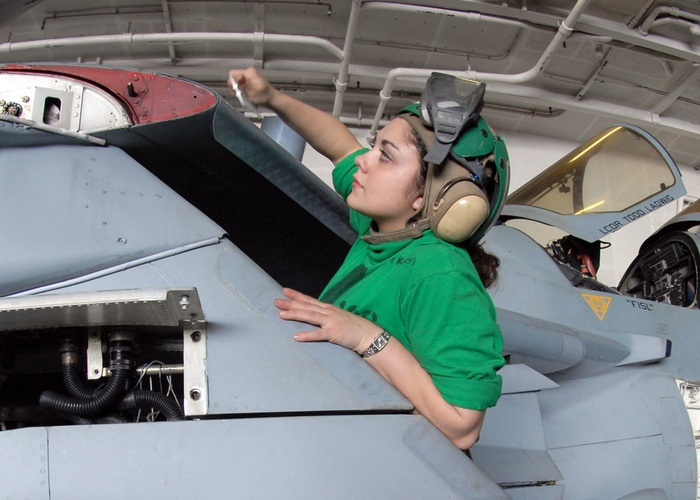Beyond Guardrail common sensor: Leidos Artemis Program Joins the Army ISR Team
While aerial signals intelligence and electronic warfare may sound like a strictly Air Force task, the Army has a fairly large tactical signal intelligence apparatus. When the Army needs to conduct intelligence, they are looking for very specific metrics, and they also need to sense things differently than the Air Force. The intelligence gathered through aerial reconnaissance by the US Army is used quite differently than the intelligence gathered by the US Air Force. The US Army is interested in kinetic intelligence, while the Air Force gravitates toward non-kinetic effects and communications intelligence. Let’s take a look at the latest US Army ISR aircraft to join the fleet: ARTEMIS I &II by the Leidos Corporation.
Beechcraft RC-12 Guardrail Is Sunsetting
The US Army is not new to aerial intelligence aircraft. Since the Vietnam War, they have been using fixed-wing assets for aerial ISR work to surveil enemy forces, but that’s not all. Since the United State Army is a primarily kinetic force (i.e., armor, artillery, infantry operations), their sensors on ISR missions flown was primarily used for targeting operation. The current aircraft is the RC-12X Guardrail common sensor, and it has been in use in one form or another since the early 1980s. The original Guardrail aircraft were converted from C-12D Hurons, which the United States Army converted 13 slick Hurons into special electronic mission aircraft.
The RC-12X Guardrail program has served admirably for many years, operating out of many locations like South Korea, Fort Huachuca, and Operation Iraqi Freedom. These modified King Air aircraft were used in the continental united states and hostile areas alike over the years, but they have reached the point where maintaining the fleet is no longer sustainable.

Program Status
The Guardrail isn’t the only ISR aircraft in the Army’s fleet; several other aircraft are used for different missions. The RC-12X is by far the most common and widely used, especially since it has been used for four decades. And since it uses a common airframe as the Army’s most prolific fixed-wing aircraft, the C-12 Huron, most of the United States Army’s infrastructure designs are built around the C-12 (Beechcraft King Air B200). This poses a serious problem for bringing on a replacement aircraft. If all of the infrastructure is designed for the King Air C-12, then a new aircraft will either need to conform to the Huron’s wingspan, or else all existing infrastructure would need to be modified. Whatever the outcome, the Army is forced with a decision: the Cold War-era relic RC-12X Guardrail common sensor platform is now due for replacement. This also presents an opportunity to update the aircraft with a more suitable aircraft for the mission: a jet.
Leidos Artemis For US army ISR
The interesting thing about the ARTEMIS program by Leidos is that it is done at no cost to the US government. While this is impressive, what is even more impressive is that they did it in just a little over a year. The ARTEMIS has undergone hundreds of hours in theater and has proven to be a highly reliable aircraft, ideally suited for military intelligence gathering and other reconnaissance operations. Commanders on the ground need the support offered by the signals equipment. While it has served admirably, the RC-12X King Air is outdated and relies on scavenging parts from the boneyard to sustain the mission. This is not a tenable situation for any flying operation, especially when it is conducting sensitive reconnaissance work.

Using the Bombardier Challenger 650
One of the main advantages of the 1970s and 1980s of turboprop aircraft was efficiency. At the time, the business-class jets were so inefficient that their capability was severely diminished. Their payload was used up in fuel and left little payload for electronics. Plus, the electronics of the era relied heavily on a human interface, whereas the modern aircraft electronics suites are largely autonomous. Take the E-11A BACN: it is replacing an aircraft with a crew of 19 with an aircraft only crewed by two pilots. But the Challenger 650 has other points that make it a perfect fit.
First, its dimensions align with the RC-12X Guardrail King Air, so the existing infrastructure will not require any structural upgrades. But the Challenger 650 itself offers some great upgrades to the ISR mission.
Second, the electronics suite is completely modular, which provides two advantages:
- The mission can be rapidly changed depending on demand by simply swapping boxes.
- The electronics can all be removed, and the jet can be configured for up to 16 passengers in just a few hours.
Why Use A Jet For Special electronic mission aircraft?
Going back to the discussion earlier about why small jets were not viable four decades ago, a lot has changed. Modern business jets are much more efficient, highly reliable, and readily available. The Challenger 650 has a 4,000nm range, which is well over double that of the RC-12X. It also cruises at 10,000’-15,000’ higher altitudes, which allows it to perform deep sensing and cover a much larger area. Also, it is much faster than a turboprop, cruising at around 530 knots instead of sub-300 knots. This means it can cover a lot more area, see farther, and get on station much faster when warfighting commanders need it.
Altitude Matters For aerial Intelligence
Altitude absolutely matters for surveillance and reconnaissance ISR work. Sensors on the aircraft can scan a much broader area at higher altitudes, so finding a jet that can perform surveillance operations at high altitudes while maintaining similar dimensions as the King Air B200 is invaluable. Ground combatants need the best overall view of their battlespace; a higher attitude provides just that. Intelligence surveillance and reconnaissance missions are long-duration operations, and a high-altitude jet with long-range provides the maximum liter time for ground support.
Precision targeting location system
Unlike other Intelligence surveillance and reconnaissance-equipped aircraft, the ARTEMIS is designed to provide accurate information for fires support for artillery units, a decidedly kinetic mission. The precision targeting location system is imperative to the overall effectiveness of the platform. Again, higher altitudes provide a much more capable picture of the battlespace than lower altitudes, especially in formidable terrain like Afghanistan.
Parting Thoughts
As the ARTEMIS program ramps up, the RC-12X will still remain in service for some time. Greenwood Aerospace is your parts procurement expert for the King Air platform, Challenger 650 airframe, and many others. Whatever your mission is, we are here to serve you with
- MILSPEC packing
- Parts kitting
- Warehousing
- Parts procurement
- And more
Call us to talk about your mission needs and requirements, and we will help you with your procurement and storage needs!



.svg)


.png)


